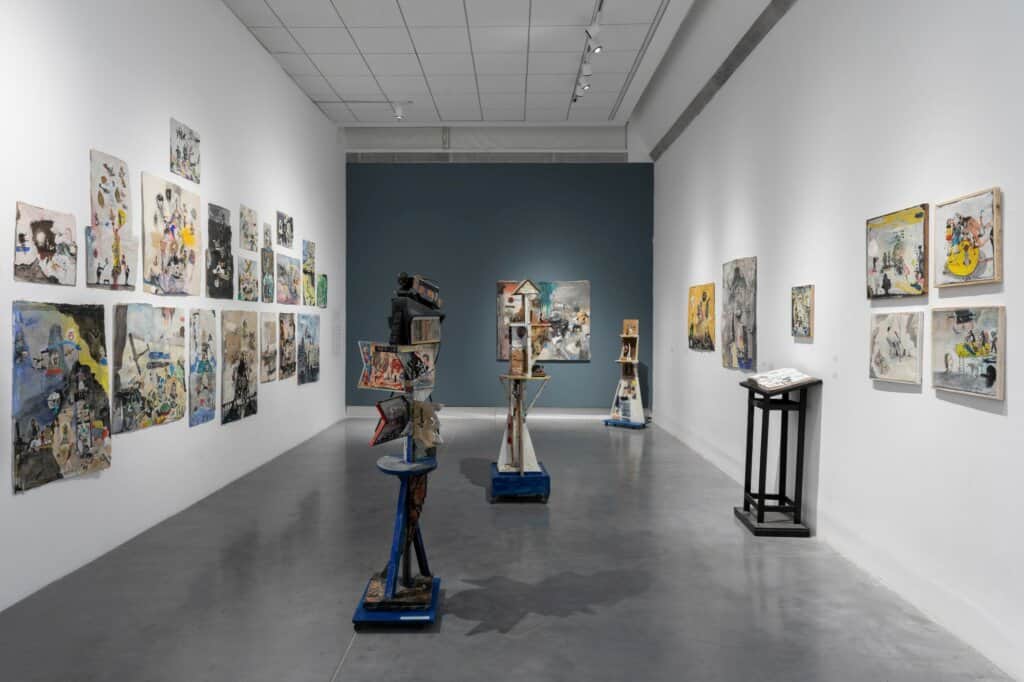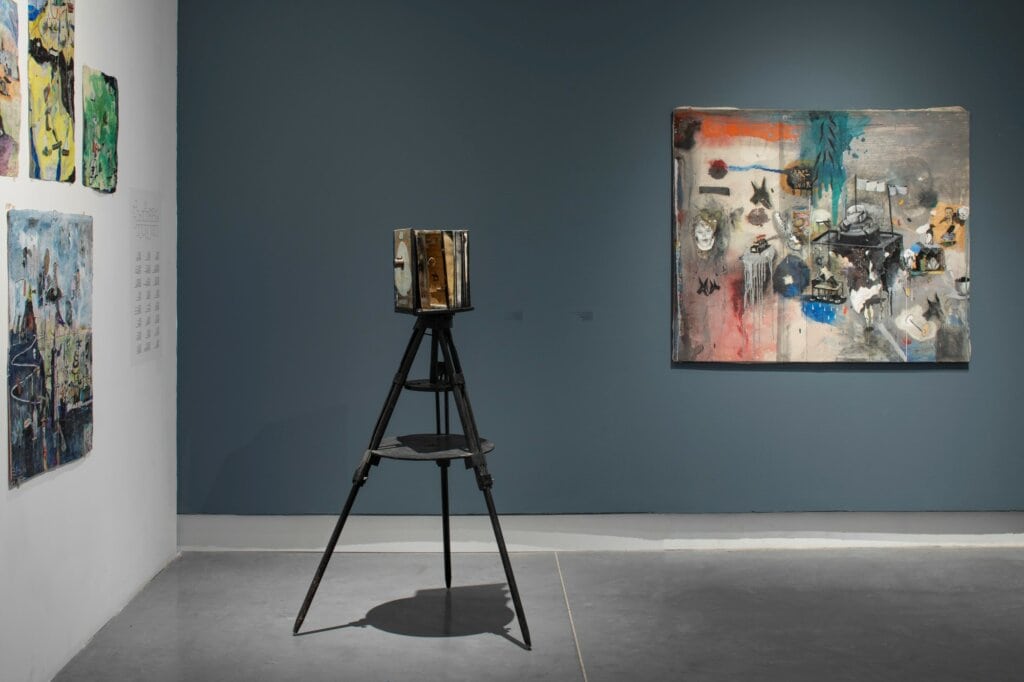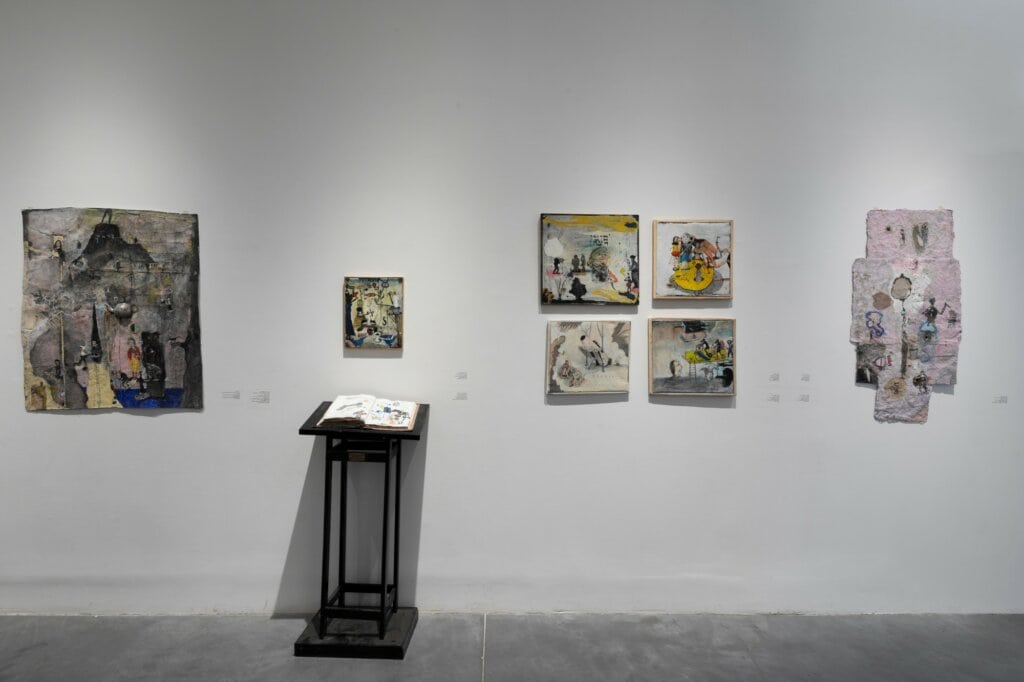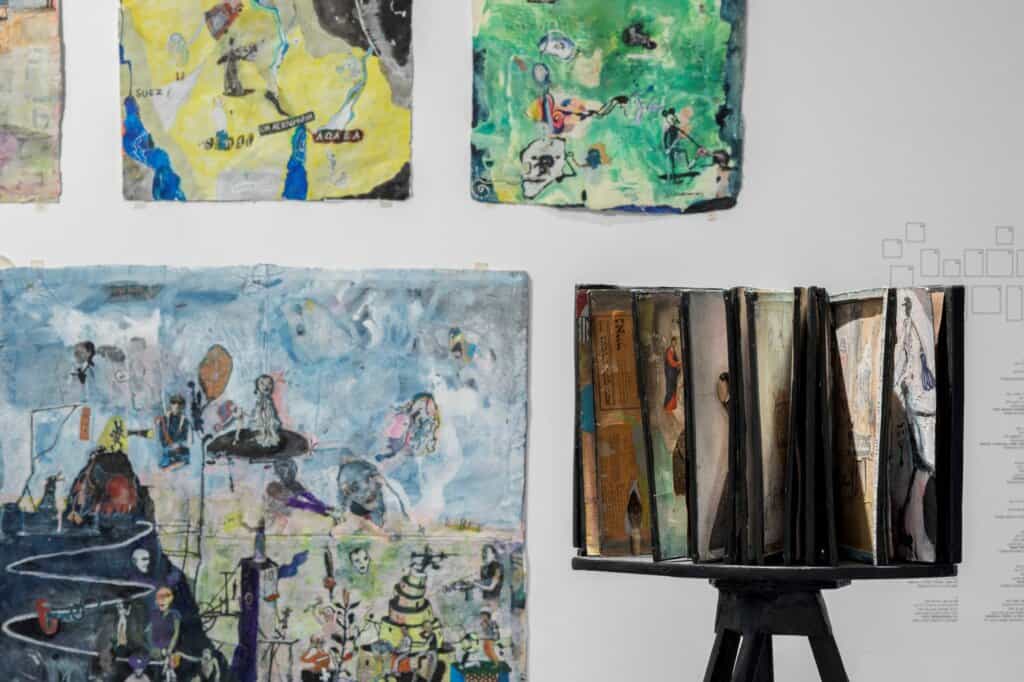Zvi Tolkovski: Color, Matter, Anarchy
Curator: Irena Gordon
21/06/2024 -
11/01/2025

How does one depict anarchy? Zvi Tolkovsky (b. 1934) brings anarchy—a situation in which a society exists without a governing authority or enforceable laws—into his art: “Every morning, when I wake up and embark on my daily routine, I have to figure out to what I should direct my focus. Only after the first cup of coffee do I gradually begin to summon up things on the paper. I rediscover the world while searching in-between dream and reality. Little by little I portray what I see around me on the paper, and the anarchy takes clearer shape.”
For more than fifty years, Tolkovsky’s work has been engaging in a dialogue with Pop Art, Dada, and Expressionism, constantly responding to the time and place in which it is created. Individualistic, kicking, and influential, his works employ a syntax of playfulness and anguish, disorder and system, juggling images from popular culture and everyday life alongside quotes from art history. His outlook on socio-political phenomena clings to imaginations and dreams, putting forth a subversive, boundless worldview which seeks to erode the imaginary gap between high and low, refined and raw.
One might lose oneself amidst the abundance of images, sources of inspiration, and techniques in Tolkovsky’s drawings and collages, oil paintings, artist books and assemblages; even the paper is handmade using either traditional methods or casting. At first sight, his oeuvre resembles a chaotic, colorful assortment, at once surprising and daunting. The viewer, according to the artist, is akin to a guerrilla fighter entering uncharted territory. To make sense of it, he must construct an imaginary map in his mind’s eye, place himself at one of the reference points, and from there gaze left and right, up and down: Here I stand, perhaps on the balcony of the Bezalel Academy of Arts and Design in Jerusalem, looking towards the Temple Mount, diverting my view to the Dead Sea; here is Masada in the south—and there, far behind, the Dead Sea Works with their advanced production facilities, and so on.
Illogical and disconcerting at first sight, this array has an internal logic; although complicated and jumbled, it allows for gradual deciphering, like a riddle or an intricate plot brought to life before our eyes in the theater of life which the artist creates for us. In this tangle, each viewer is asked to find an independent path for himself that enables interpretation of the featured reality. The bright colors, mainly yellow, red, and blue on gray and black; the captions indicating reference points in the local geography alongside quotes from art history; airplanes hovering in the air over historical sites; resurrected skeletons, and cartoon heroes such as Mickey Mouse—all these join in a wild celebration of ideas and inspirations. The erupting joie de vivre disrupts the order of things, introducing the end of life.
The eclectic assembly of assorted images and their placement on one plane without hierarchy creates an anarchic relationship in which the individual details do not obey accepted structures and rules, but only the will of the artist at the moment of creation. There is nothing more or less important, but only a proposal to assess the new day’s events anew. The disruption of order and undermining of the fundamentals of rational thought while giving expression to fantasy, generate a fascinating world of user- friendly chaos. They bring the viewer closer to the most intimate secrets, and in the process formulate a destabilizing, refreshing statement about human existence.
Text: Hagai Segev




Installation photographs: Tal Nisim

